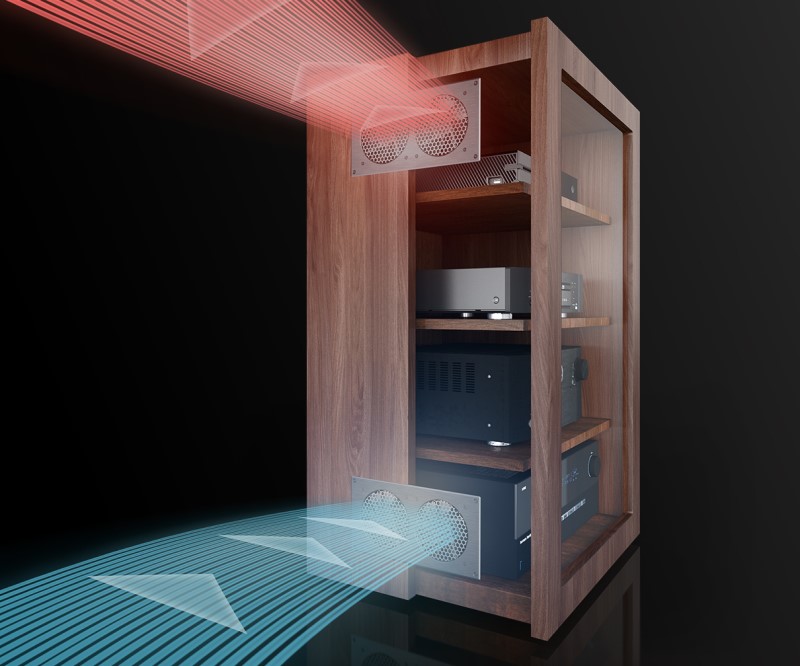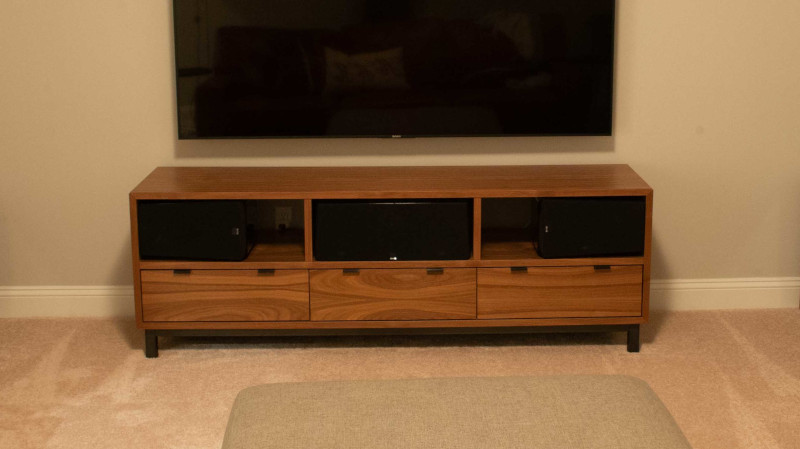Converting Normal Furniture to An Equipment Cabinet
Designing a dedicated home theater can be a daunting task. Designing one in a shared space that needs to have form and function can be even harder. You have a list of wants and needs. Your family has a list of wants and needs. Balancing the two can be near impossible. Audio enthusiasts tend to target furniture that is singular in function and utilitarian. What if your family wants a piece of furniture that is more form over function and doesn’t immediately suit your needs? What if you own a great piece that you love and want to integrate it into your existing setup, but it is not AV-friendly in terms of ventilation? Good news! With a little research, a bit of DIY know-how, and some patience, you can convert a normal piece of furniture into a great AV equipment cabinet.
Research
The first step in any DIY equipment cabinet conversion project is to do some research and look for ideas. This is not to say that you shouldn’t use your design ideas. However, you will find something similar to your project or see something you like more.
Pinterest, Google, and YouTube are my go-to sites when I am starting my research. You will need to try a lot of different search terms and configurations until you dial in the search. Once you find relevant images or videos, the algorithm should kick in and put you down the rabbit hole!
Adding Ventilation
So you have selected the piece of furniture you want for the space, but it’s enclosed and you worry about proper ventilation for your gear. That’s a legitimate concern.
The easy fix when converting furniture into an equipment cabinet is to cut out the back or remove the thin backing that is generally attached to MDF cabinets. This does involve the use of some power tools. A jigsaw can make short work of a solid back and a hammer can quickly remove tacks holding on backings. However, cutting out, or removing part of the cabinet can weaken it, so you may need to reinforce the back. The other option is to cut out the section in which your gear sits, keeping most of the back intact.

What if you don’t own power tools? Or are uneasy cutting out part of your cabinet? Or you simply don’t want to alter or damage an expensive piece of furniture? How about replacing the shelving with wire racks or shelving? This is a simple and non-destructive way to allow air to easily flow around the entire cabinet and is generally easy to install and remove if needed.
Lastly, AC Infinity sells active cooling fans designed to draw hot air off your equipment. They have designs that can vent the exhaust to the front, rear, or top of the unit. They also sell fans that can be outfitted into the back of your cabinet, drawing hot air from the cabinet and venting it to wherever you have the fan mounted.
Making it Work
A lot of people have their equipment hidden away behind doors or in another room. The issue is that most AV equipment is still heavily dependent on IR remotes that require line of sight to operate. A simple solution is to remove the doors, but what if you don’t want to do that?
My go-to would be the Logitech Harmony hub and remote, but they are discontinued. The new hub-based Sofabaton X1 is still not available and its capabilities are not yet known. HDMI CEC is an option, but can often be unreliable.
Now what? An IR repeater is a simple option if you just need to transmit the signal from your remote to the gear inside the furniture you’ve converted to an equipment cabinet. Setup is straightforward. Place the IR receiver in a spot that allows line of sight to your remotes and plugged into the controller unit. Affix IR emitters on the devices you need to control and are plug into the jacks on the controller unit. When you press a button on your remote, the receiver transmits that signal to the controller and then to the appropriate component, and voila, IR goodness!
Another option is to plug IR extenders into “IR In” ports on your gear. My Denon X3600 has a 3.5mm plug that will accommodate the extender. Place the IR extender in the spot you want and run the cord back to the AVR. Simple and effective, but not all equipment have these.
Hiding it Away
Not everyone wants speakers on stands in their living space. They want the system to be blend into the room, not be the focus of the room. In these circumstances, speaker fabric is your solution. Speaker fabric is acoustically transparent, easy to work with, relatively inexpensive, and comes in a variety of colours and designs that will match any decor.

One of the more common applications when converting furniture to equipment storage is to remove the glass from a cabinet door and staple the fabric to the inside of the door. This creates the illusion of a solid door, but allows your sound to pass through unobstructed. It also increases ventilation in the space. With some patience, a jigsaw, and a steady hand, the same can be done to a solid door.
Again, do some research. A quick Google search showed me several different projects involving speaker fabric, along with some easy-to-follow tutorials online.
Wrap Up
So there you have it. This is not an exhaustive list of all the projects you could undertake to convert your furniture into an equipment cabinet that needs your needs, but it’s a good start.
The internet is full of very creative and talented people that can give you ideas and help you achieve your goals. My advice? Do your research, be patient, plan it out, and above all else, have fun!


